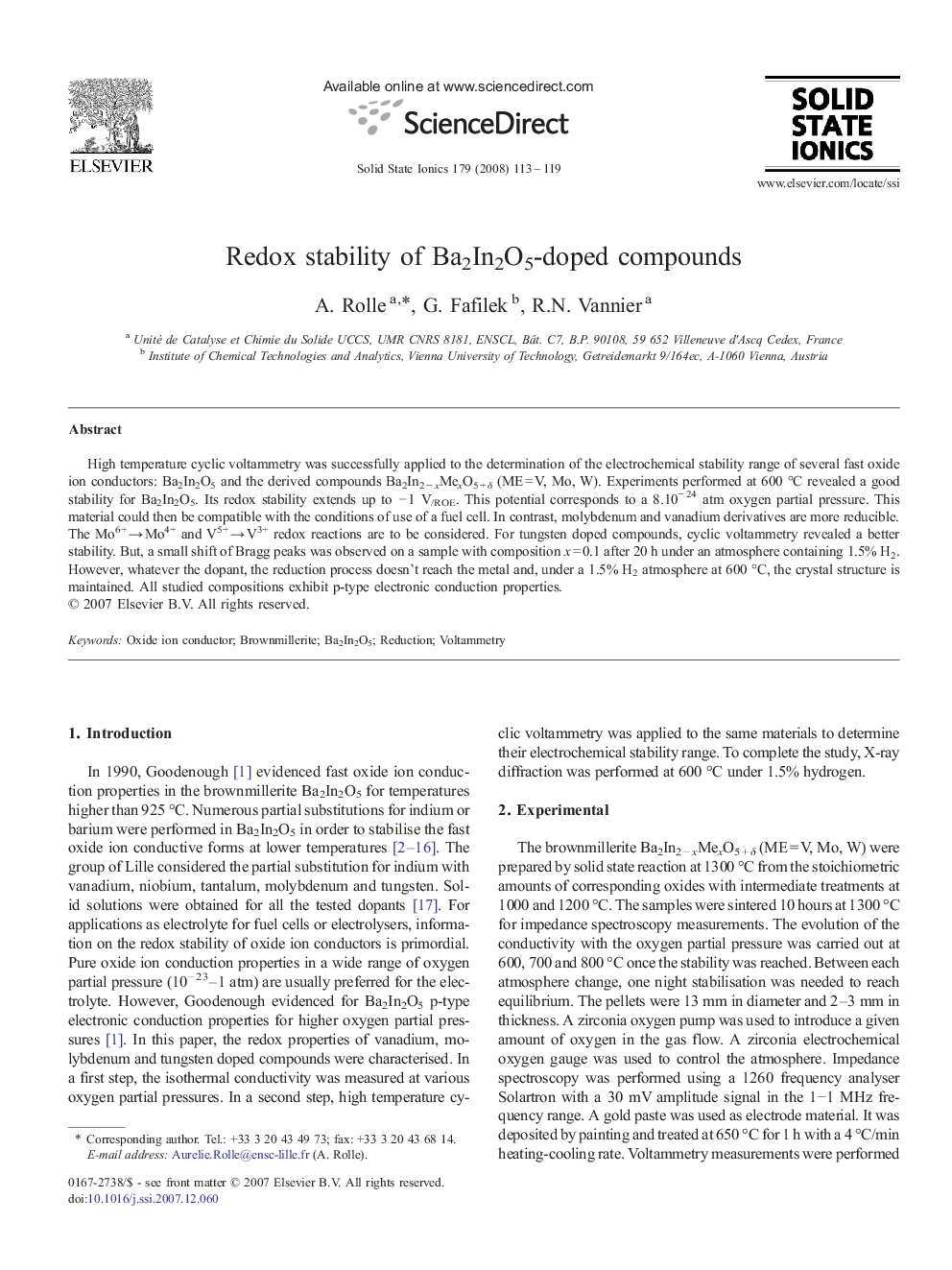| Article ID | Journal | Published Year | Pages | File Type |
|---|---|---|---|---|
| 1296948 | Solid State Ionics | 2008 | 7 Pages |
High temperature cyclic voltammetry was successfully applied to the determination of the electrochemical stability range of several fast oxide ion conductors: Ba2In2O5 and the derived compounds Ba2In2 − xMexO5 + δ (ME = V, Mo, W). Experiments performed at 600 °C revealed a good stability for Ba2In2O5. Its redox stability extends up to − 1 V/ROE. This potential corresponds to a 8.10− 24 atm oxygen partial pressure. This material could then be compatible with the conditions of use of a fuel cell. In contrast, molybdenum and vanadium derivatives are more reducible. The Mo6+ → Mo4+ and V5+ → V3+ redox reactions are to be considered. For tungsten doped compounds, cyclic voltammetry revealed a better stability. But, a small shift of Bragg peaks was observed on a sample with composition x = 0.1 after 20 h under an atmosphere containing 1.5% H2. However, whatever the dopant, the reduction process doesn't reach the metal and, under a 1.5% H2 atmosphere at 600 °C, the crystal structure is maintained. All studied compositions exhibit p-type electronic conduction properties.
